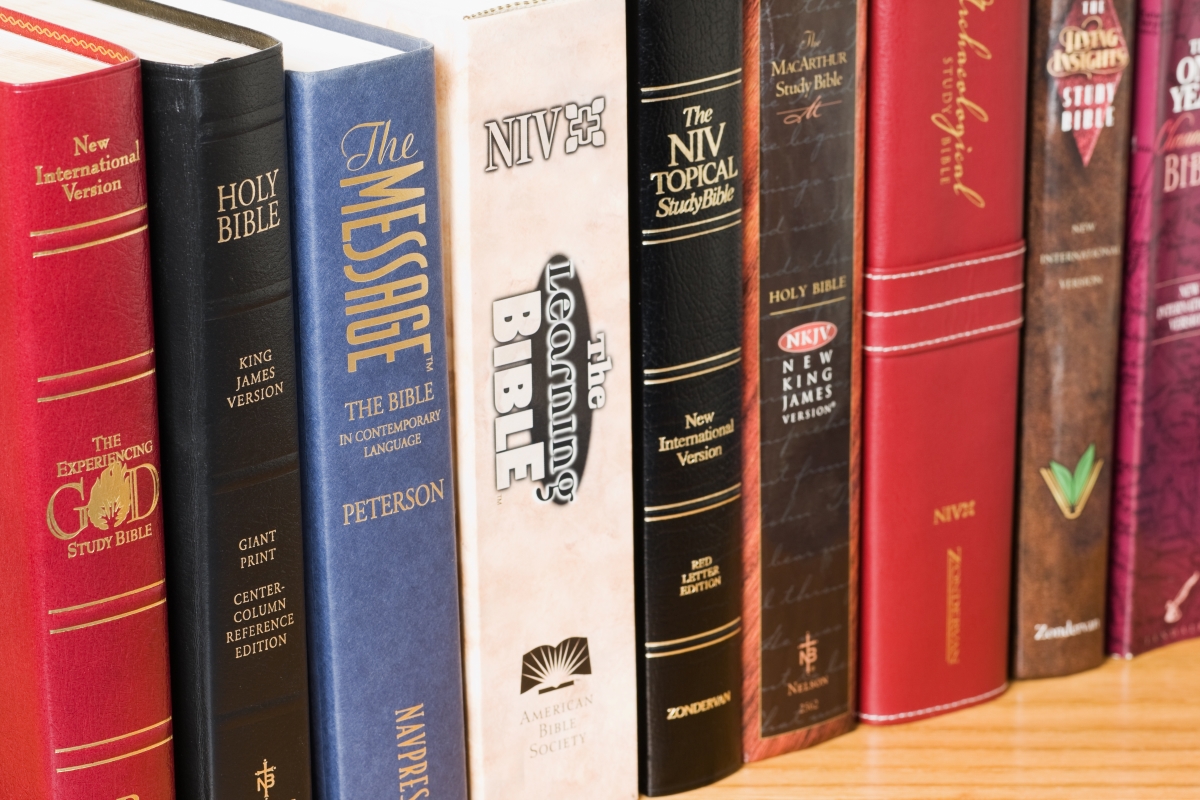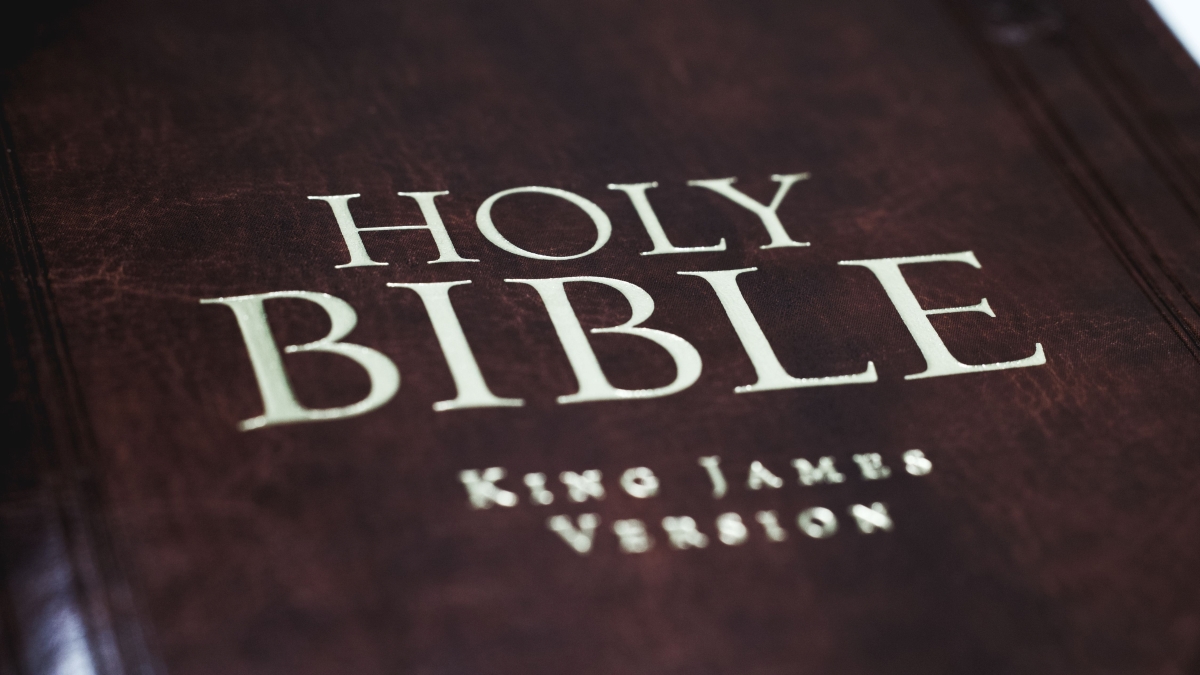A Quick Guide to 10 Different Bible Translations
A useful primer for why there are many different versions of the Bible.
It’s no surprise that the Bible is the most influential book in history, with billions of copies sold over the last 1000 years. What is surprising, is that few people realize that there are numerous versions and translations of the Bible. There are notable differences between the most popular Biblical texts, which have now been joined by newer translations that are gaining popularity for a larger, bilingual, more connected set of Christians.

While the Bible remains the sacred text at the center of Christianity – its core messages and stories remain the same – popular versions can differ greatly in their readability, translation philosophy, and target audience. A Quick Guide to 10 Different Bible Translations provides an overview of influential Bible translations and their key characteristics. It also touches on the types of Christian denominations and believers that prefer to utilize each version of the Good Book.
The Most Influential Bible Translations

The five major translations below are the most influential English versions of the Bible, with at least 100 million copies of each in circulation. They fall into either literal word-for-word, or thought-for-thought philosophies. Literal translations preserve historical word choices and sentence structures while dynamic equivalency focuses on communicating the same biblical context by using modern terminology that is more comfortable for contemporary readers.
1. King James Version (KJV) and New King James Version (NKJV)
The King James Version (KJV) is the most widely used English Bible translation, with over 1 billion copies printed since 1611. Commissioned by King James I of England in 1604 and completed by 54 scholars, the KJV took into account a range of early English language translations. The eloquent language of the KJV made it the literary standard for centuries. However, the text contains errors and biases, and the language can be difficult for modern readers.
The New King James Version (NKJV) was released in 1982 as a modern-language update of the KJV, retaining much of the traditional interpretation and sentence structure. Its considered to be a faithful translation of the original Hebrew and Greek texts. The update mainly centers on the vocabulary and grammar to make it more accessible to modern readers.
Preferred by: The KJV and NKJV is popular with many Protestant traditions, including Baptists, Pentecostals, and Evangelicals.
2. New International Version (NIV)
The New International Version is the most popular modern English Bible translation, with over 450 million copies sold. The translation was initiated in1965 by a committee of evangelical Biblical scholars who sought to provide a contemporary English text that was faithful to the original languages. Dynamic equivalence was used to capture the meaning behind the wording, rather than a strict literal translation. The NIV uses modern vocabulary and grammar rules, making it highly readable and accessible. However, critics claim important theological terms have been obscured or watered down.
Preferred by: The NIV is popular across many Protestant denominations.
3. English Standard Version (ESV)
The English Standard Version is a formal equivalence translation that adheres closely to the original Biblical languages and grammar, with the goal of modernizing language while maintaining accuracy. The ESV retains theological terminology like “grace” and “justification” and is seen as a middle ground between formal (word for word) and dynamic equivalence translations.
Preferred by: The concise, readable text is growing in popularity in Reformed faith traditions, including Calvinists, Presbyterians, and certain Baptist believers.
4. New American Standard Bible (NASB)
The New American Standard Bible is widely considered the most literal English Bible translation, staying true to the structure of original Greek and Hebrew texts. The current NASB was first used in 1971, as an update of the American Standard Version of 1901.
The NASB reproduces nuances like verb tenses and idioms, and preserves the lyrical beauty of Psalms and Proverbs. However, the rigid adherence to formal equivalence requires re-reading difficult passages.
Preferred by: The NASB is preferred by conservative theologians and church leaders across denominations.
5. New Revised Standard Version (NRSV)
The New Revised Standard Version was created by the National Council of Churches with the aim of providing an English Bible suited for personal devotion, seminary study, and church use. It maintains elements of Elizabethan English while replacing outdated grammar and vocabulary. The NRSV is known for its accuracy and rigorous translation process. However, some conservatives oppose gender-inclusive language like “men and women” instead of “men.”
Preferred by: The NRSV is widely used across Protestant denominations and in academic settings.
Contemporary Bible Translations

While not as influential as the big five Bible translations above, there are numerous other translations that have been gaining popularity in recent years. Their popularity has bloomed due to their modern characteristics – which include more inclusive language, modern language and grammar, and a more worldwide viewpoint. Five noteworthy examples include:
6. New Living Translation (NLT)
The NLT is a dynamic equivalence translation that uses conversational language to make the Bible more accessible. It was published in 1996 and has become one of the best-selling English translations.
Preferred by: The NLT is popular with new believers and youth.
7. Christian Standard Bible (CSB)
The CSB was released in 2017, and uses optimal equivalence translation, which is a balance of linguistic precision reflecting the original languages with readability in contemporary English.
Preferred by: The CSB is growing in popularity among Evangelical churches.
8. New American Bible Revised Edition (NABRE)
The NABRE is the official Catholic Bible for the United States of America. Released in 2011, it includes the first revised translation since 1970 to include much more accessible language.
Preferred by: The NABRE is a popular bible for Catholic study and liturgy.
9. Orthodox Study Bible (OSB)
The OSB was released in 2008 and includes commentary notes from within the Eastern Orthodox denomination of Christianity. It features an English translation of the St. Athanasius Academy Septuagint edition for the Old Testament, and the New King James Version text for the New Testament.
Preferred by: The OSB is preferred by many Greek and Russian Orthodox churches.
10. The Passion Translation (TPT)
The TPT was released in 2017 as a new paraphrase translation focused on emotional connection and reading experience. It’s designed to merge emotion with the life-changing truth of God’s Word. However, the TPT has been criticized for its accuracy and lack of scholarly review.
Preferred by:The TPT has gained popularity among youth groups and ‘Charismatic Christians’ (a form of Christianity that emphasizes the work of the Holy Spirit and spiritual gifts as an everyday part of a believer’s life).
Conclusion
Understanding the history and characteristics of the most widespread Biblical texts provides insight into the diversity within Christianity. Literal translations preserve historical word choices while dynamic equivalency focuses on communicating ideas., and newer translations add an emotional dimension. While the Word of God endures, the numerous translations continue to evolve over time.
SKM: below-content placeholderWhizzco for FHB

